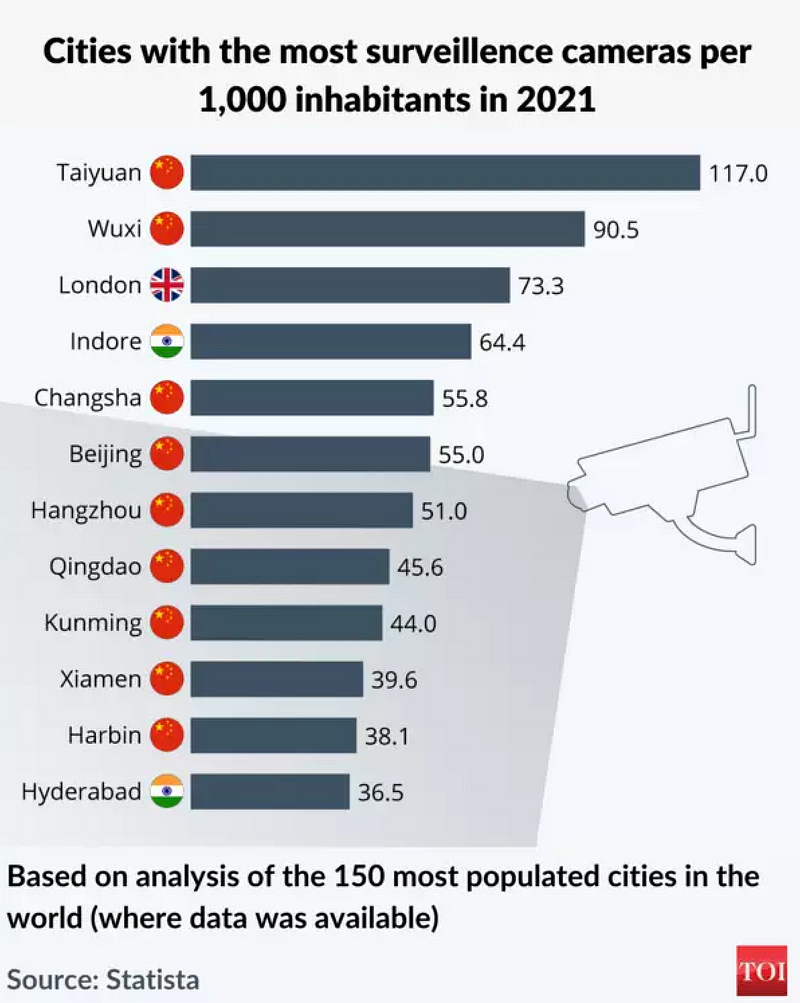Harnessing Technology Responsibly: The Need for Ethical Oversight
Written on
Chapter 1: The Imperative of AI and ML
In the first installment, we established that AI and machine learning (ML) are essential tools for modern society. The second part highlighted that these technologies not only enhance understanding and decision-making but also possess the capability to create, learn, control, perceive, and, when integrated with mechanical systems, act intelligently within the physical realm.
As it stands, the governance, ethics, and regulatory frameworks surrounding data and AI/ML remain in their infancy. The ways in which businesses and governments handle both public and private data, as well as their decision-making processes, will necessitate significantly more transparency and safeguards than we currently observe.
A technologist's perspective sheds light on the responsibilities we must embrace as we advance and implement these solutions.
Section 1.1: Ubiquitous Data Capture
Everywhere, data collection technologies and open-source AI models facilitate the large-scale gathering of information, enabling the identification of unique insights and the creation of intelligent automation. This trend is particularly evident in the digital realm, where user interactions are recorded, but it's also increasingly easy to digitize aspects of the physical world, often without individuals' awareness or explicit consent.

Consider the omnipresence of data-capturing devices such as lampposts, vehicles, and even buildings. Surveillance cameras, often justified in the name of public safety or private security, are proliferating. According to Statista, China and the UK lead the world in terms of surveillance cameras per capita.

Unfortunately, the security of these camera feeds is not always guaranteed, leaving them vulnerable to unauthorized access. A notable incident involved hackers breaching a significant database of security-camera footage from Verkada Inc., which allowed them to access live feeds from 150,000 cameras in various settings, including hospitals and police stations.
Modern vehicles are equipped with an impressive array of sensors—between 15 and 30 in their engines alone, with over 70 spread throughout the entire vehicle. Our smartphones are similarly embedded with numerous sensors, including proximity sensors, ambient light sensors, and more.
The Israeli firm NSO Group developed Pegasus, a spyware that can extract extensive data from smartphones and activate location tracking, cameras, and microphones without user knowledge. A recent concept introduced by VIVO showcases a phone with a drone equipped with a 200MP camera, which raises concerns about the potential for even greater data collection without awareness or consent.

Reflecting on the data landscape, it's staggering to note that 90% of the world's data has been generated in just the past two years. The systematic gathering of data—regardless of ownership—raises significant questions regarding regulation, jurisdiction, privacy rights, and ethical considerations. Moreover, the proliferation of accessible AI models simplifies the implementation of such technologies, presenting new opportunities alongside potential risks.
Section 1.2: The Dual Nature of Data
For years, data has been likened to gold or oil, yet, for many organizations, it poses a considerable liability. Research by Forrester indicates that between 60% and 73% of data within a company goes unused strategically. Furthermore, a study from Carnegie Mellon University revealed that approximately 90% of an organization's data is classified as "dark data"—information collected but not utilized for insights or decision-making.

Data only serves as a valuable asset when it is purposefully captured and managed; otherwise, it risks becoming a liability that jeopardizes the organization's viability. The most successful companies of the past two decades have thrived by accumulating vast amounts of data from users, often with minimal regard for privacy or ethics. This model, exemplified by giants like Facebook and Google, seeks to monetize behavioral data by granting brands the ability to influence consumer choices. The adage holds true: if the service is free, you might just be the product.
Additionally, the intrinsic biases within data create challenges. Research has shown that a small percentage of users generate a significant portion of online content, which skews the insights derived from such data. The implications of systematic data collection, storage, and analysis introduce further complexities: the more data collected, the greater the risk of cyberattacks and breaches.
AI's Role in Shaping the Future of Creative Work dives into the balance between harnessing AI's capabilities and maintaining ethical standards in data usage.
Section 1.3: The Challenge of Security
Once data is captured and stored, the assumption must be that it will attract attempts at theft. Therefore, organizations must prioritize data security and ensure it is utilized effectively for its intended purpose. This is essential to mitigate risks, as indiscriminate data collection leads to increased exposure and potential liabilities.
Lastly, the biases inherent in AI/ML models, stemming from the data on which they are trained, can inadvertently lead to detrimental outcomes on a large scale.
Chapter 2: Augmentation, Not Replacement
The concept of augmentation does not equate to job replacement; however, it will inevitably displace certain tasks. Managing this transition and softening its impact across organizations and society will require comprehensive communication and support.
Significantly, the immense potential of AI/ML can be directed toward addressing some of the most pressing global challenges: sustainable development, climate change, food security, and energy consumption, among others.
In summary, the ease and affordability of comprehensive data collection—often done without consent—alongside the biases inherent in data generation and the challenges of data management underscore the need for vigilance. AI/ML technologies should be employed to enhance human capabilities rather than replace them, focusing on solving critical issues facing our world today.
Section 2.1: Beyond Technology
To conclude on an optimistic note, progress and innovation extend beyond mere technological advancements; they also involve rethinking problems in novel ways.

As Albert Einstein famously remarked, “If I had an hour to solve a problem, I would spend 55 minutes thinking about the problem and five minutes thinking about solutions.”
That’s all, folks!
Damien
What we see and what we value: AI with a human perspective by Fei-Fei Li explores the balance of human values in the age of AI.